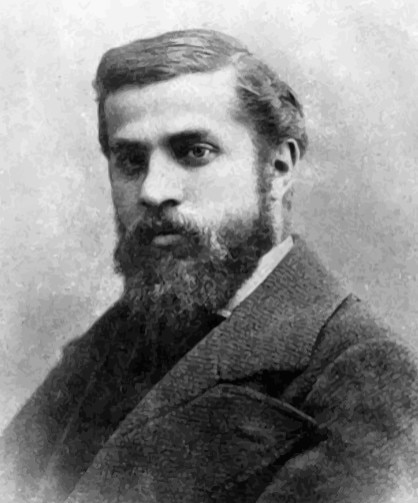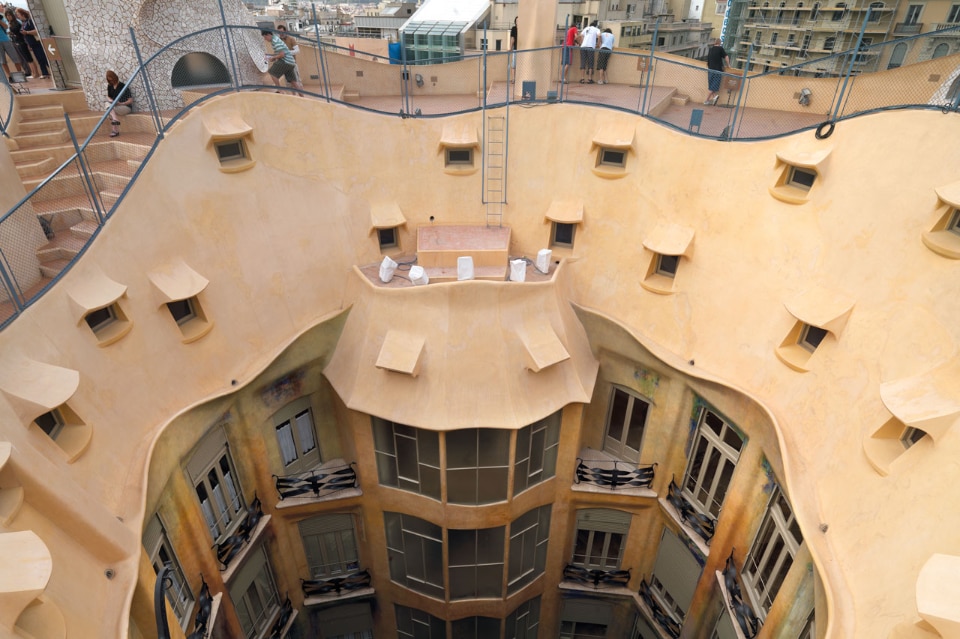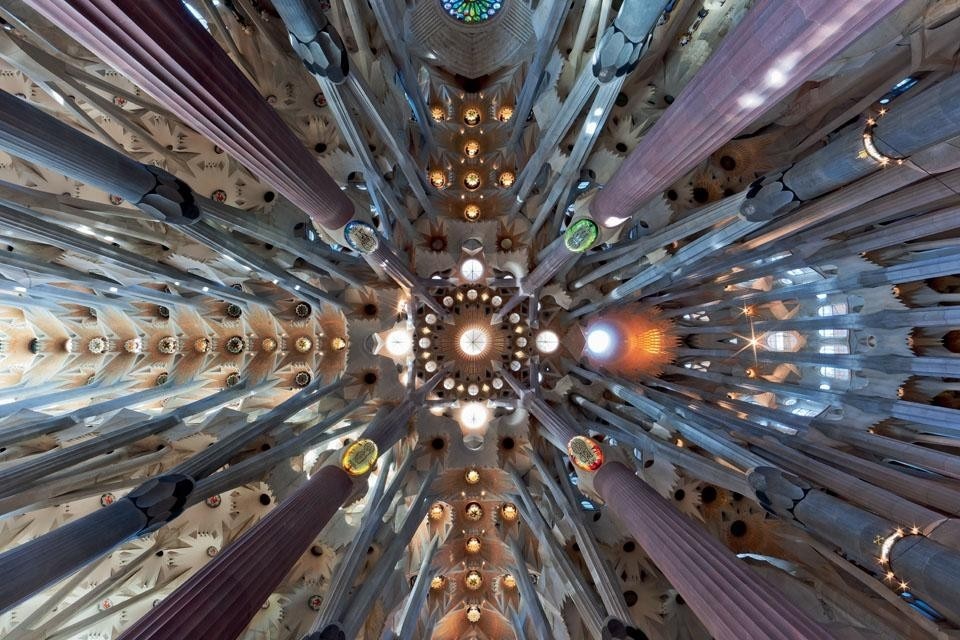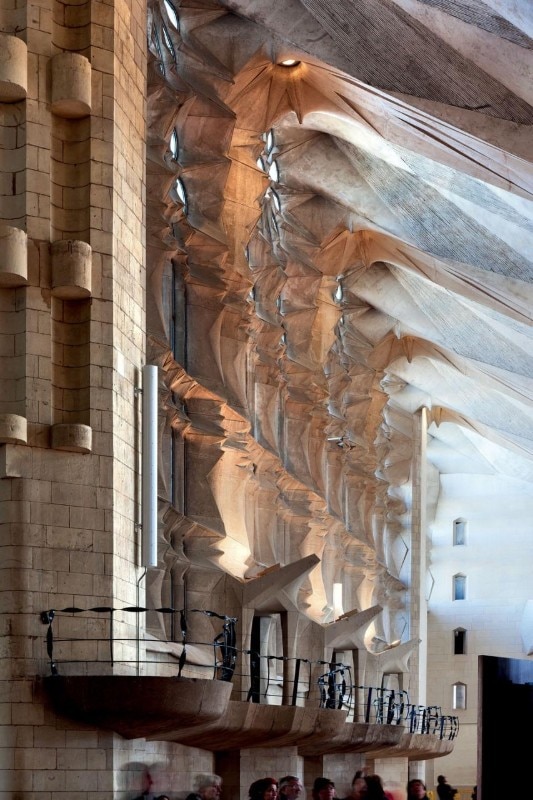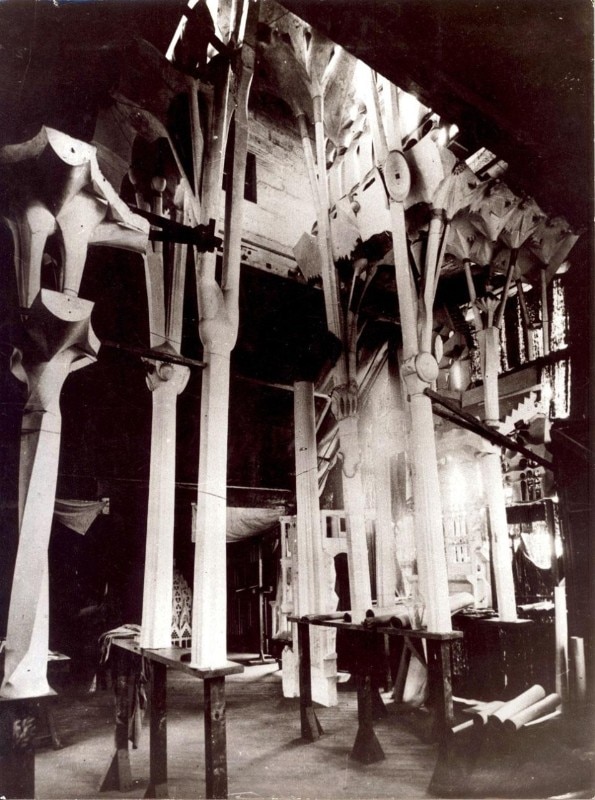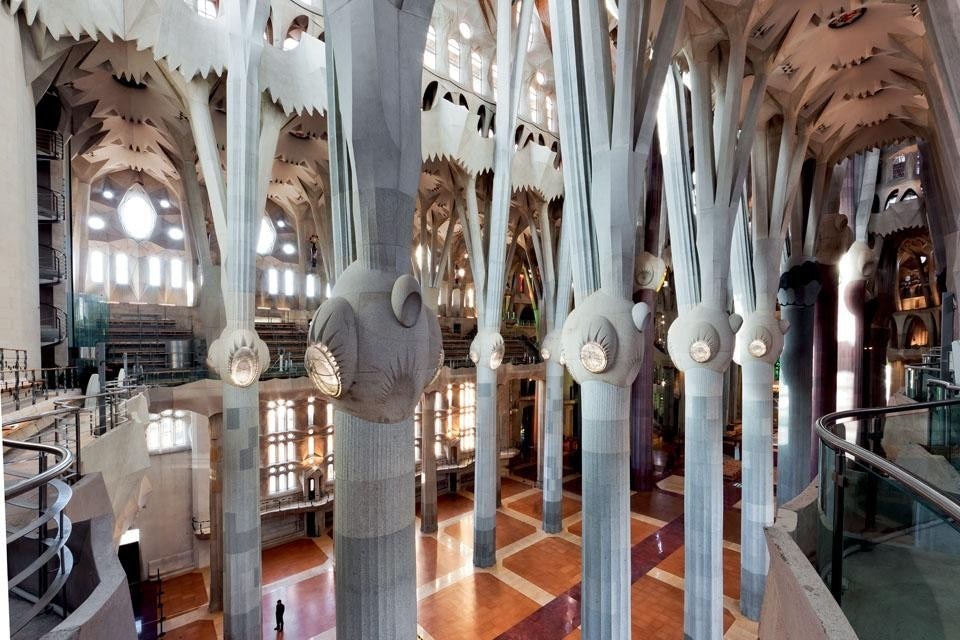Antoni Gaudí y Cornet, known more simply as Antoni Gaudì, was born in Reus, in the south of Catalonia, and then moved to the capital of the region, Barcelona, in 1869. Here he met with a number of exponents of the so-called Renaixença, a cultural and political movement which was aimed at promoting the Catalan language and culture and, above all, the assertion of regional independence from the Castilian government. These were ideals shared by Gaudí, and they influence a number of his most famous works.
Having graduated from the Architectural High School in 1878, Gaudí visited the Universal Exposition in Paris, where he had a change encounter with the industrialist Eusebi Güell, who was to become his most important patron. Furthermore, in France, the young designer had the opportunity to experience the fertile artistic climate that was soon to lead to the emergence of Art Nouveau, a movement that Gaudí found affinity with, becoming its most famous representative in Spain through the local form known as Catalan Modernism.
An interest in the application and use of new building materials available to the emerging industrial wave were combined with the aforementioned Catalan secessionist ideals, generating a form of architectural expression which – in Gaudí’s case – assumed such particular characteristics as to seem almost a movement in itself.
On returning to Spain, the architect received various commissions as a draughtsman in the studio of Joan Martorell, a character who favoured a neogothic style and who, as councillor for the philanthropist Josep Maria Bocabella (in turn a supporter of the construction of the Sagrada Familia church), recommended that the young Gaudí should fill the role of head architect in the construction of the church.
This period saw a series of minor collaborations and personal contracts which brought to light his extraordinary attention to detail and his precocious and astounding inventiveness in the use of shapes. One needs only to cite the work for the chapel in the church of Montserrat monastery (built by Francisco Villa between 1875 and 1877), that for the waterfall in the Park of the Citadel of Fonsterè (15877-1882) and the street lights designed by Gaudí for the illumination of Plaza Real y de la Barceloneta (1878), for which a combination of stone and cast iron was used.
Gaudí’s debut is, however, generally considered to be marked by the construction of Casa Vicens (1883-1885), a villa in Calle de las Carolinas, whose style was defined as mudejar-moresco for the combination of structural elements such as the Moorish arch with azulejos and unfinished stone, which can also be found in the design for the Finca Güell Pavilions (1882).
Between 1886 and 1889, Gaudí took on his first project for Güell, which was the building of the same name constructed in Calle Nueva de la Rambla, characterised by a marked use of Gothic elements. The six-floor house is built around a full-height salon with a richly-decorated ceiling and is also the first work to feature the parabolic arches which were to become a typical element in his architecture. On the main floor, the details are constructed with extreme ingenuity. The windows on the façade feature delicate elements in iron, and when the wooden shutters are opened, they slot into the jambs, becoming ornate murals.
A decorative wealth which was to peak in later designs, grouped together by critics under the name of “expressionist naturalism”, seen as the ability to transform decorations - generally inspired by the animal kingdom - and the plastic nature of architecture on all scales, into a remarkable revolution of an almost baroque style. Examples include Casa Calvet, (1898-1904) with its extraordinary façade in carved stone, the crypt of the church in Colonia Güell (1898-1914) in Santa Coloma de Cervelló – a forest of majestic pillars all inclined differently – and the entire Güell park (1900-1914), constructed on the side of Mount Carmelo. An urban planning project with landscape characteristics, the park – only partially completed – is a modern city-garden developed around a large plaza, designed to play host to games and celebrations, supported by a colonnade which is in turn accessible via a highly original stairway populated with strange, lizard-like creatures with their bodies covered in highly colourful fragments of ceramic.
These extraordinary examples were then joined by the Batló (1904-1906) and Milà (also known as “La Pedrera”, 1906-1910) houses, which Salvador Dalì was to comment on in an article published in the magazine “Minotaure”, underlining “the nutritive, edible character of this kind of house, which nothing more than the first edible houses, the first and only erotic buildings, whose existence implies this “urgent” and very necessary function for the romantic imagination: to truly be able to eat the object of one’s desire” (1933).
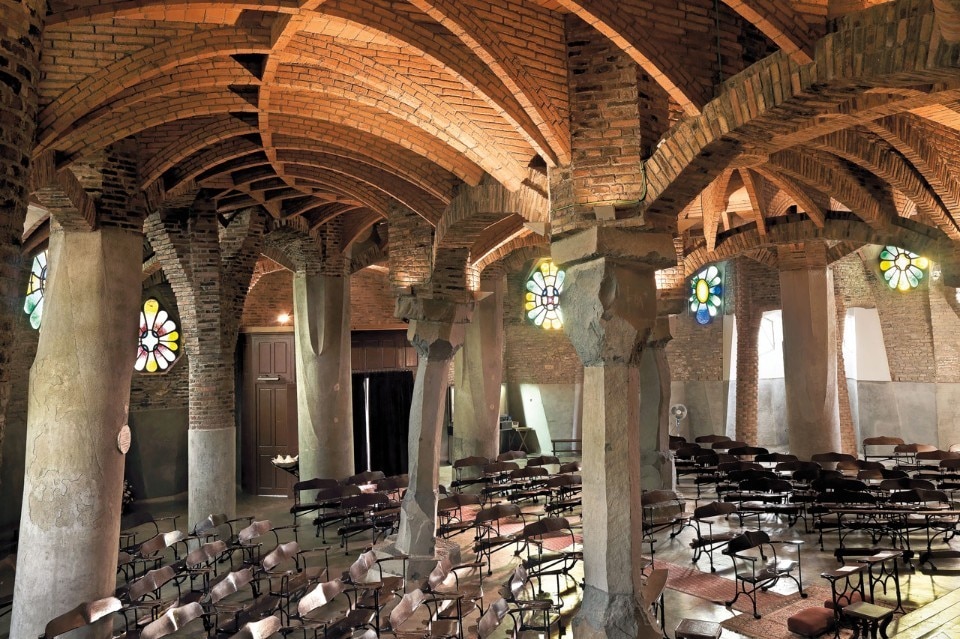
The key role in the development of this form of design was however played by the complex, infinite and articulated project for the Sagrada Familia, which involved Gaudí from the age of 31 – since 1881 – until his death. For the new cathedral of Barcelona, the architect completely revolutionised the original project by Villar – who died soon after the construction works for the foundations – designing a grand construction made up of independent volumes. The first chapel of the crypt to be completed is central to the apse and dedicated to Saint Joseph; in 1893, the entire underground chamber was completed, and work moved on to the construction of the walls and spires of the upper apse and the north-east façade.
In 1914 work was halted due to the lack of funds and Gaudí dedicated his time to the constant revision of the entire design – the only one to be carried forward from that moment on – and the many models, made to test the resistance of the structure that was under construction. Once building works had recommenced, he had barely enough time to see the construction of one of the bell-towers, dedicated to Saint Barnabus, before being hit by the first tram to be set up be the Municipality of Barcelona on 7 June 1926. As a tribute, he was buried in the crypt of his basilica.
In the words of George Collins:
The power of Gaudí as an architect lay in his prolific invention of forms. The variety and expressiveness of these forms as sculpture would alone mark him as a notable modern artist. But they were, in fact, the result of unusual structural devices, of an imaginative employment of materials and a unique sense of decoration, three traditional attributes of a master builder. Add to these his skill with such intangibles as space, colour and light, and we can understand why the world is today so engrossed in his relatively few and almost forgotten works
- Born:
- 1852–1926
- Profession:
- architect, designer


